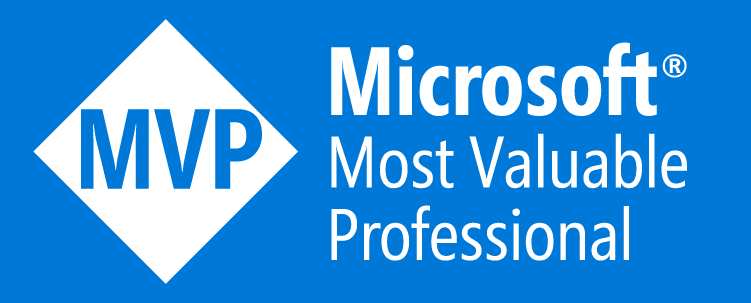在 WPF 应用中,可以非常方便将一张图片设置为 SplashScreen 启动界面欢迎图,但是如果有设置了启动界面欢迎界面,那么 Application.Current.Activated 事件就不会被触发。本文通过 WPF 框架开源的代码告诉大家这个原因
这是在 GitHub 上,一个小伙伴问的问题,详细请看 After adding a splashscreen Application.Current.Activated event is no longer fired · Issue #4316 · dotnet/wpf
设置某个图片作为 SplashScreen 启动图的方式很简单,只需要右击图片,设置属性,选择 SplashScreen 就可以。也可以在 csproj 中添加如下代码设置
<ItemGroup>
<SplashScreen Include="SplashScreen.png" />
</ItemGroup>
尝试在 App 的构造函数里面添加如下代码用来监听 Activated 事件
public partial class App : Application
{
public App()
{
Current.Activated += Current_Activated;
}
private void Current_Activated(object sender, EventArgs e)
{
}
}
在没有设置 SplashScreen 时,你可以发现 Current_Activated 函数将会进入,而在设置 SplashScreen 之后,将不会进入此方法
原因是在设置 SplashScreen 启动界面,那么在生成的 App.g.cs 文件里面将会包含下面代码
[System.STAThreadAttribute()]
[System.Diagnostics.DebuggerNonUserCodeAttribute()]
[System.CodeDom.Compiler.GeneratedCodeAttribute("PresentationBuildTasks", "5.0.1.0")]
public static void Main()
{
SplashScreen splashScreen = new SplashScreen("SplashScreen.png");
splashScreen.Show(true);
App app = new App();
app.InitializeComponent();
app.Run();
}
也就是说 SplashScreen 将会在 Main 函数里面最开始就执行,因此启动图显示的速度也比较快。在 SplashScreen 显示完成之后,再创建 App 出来,也就是说监听 Activated 事件是在启动图之后
那么 Activated 事件是由谁分发的?在 src\Microsoft.DotNet.Wpf\src\PresentationFramework\System\Windows\Application.cs 的 EnsureHwndSource 函数里面将是入口代码,而在 WmActivateApp 函数就是触发的逻辑,先看一下 WmActivateApp 的代码
private bool WmActivateApp(Int32 wParam)
{
int temp = wParam;
bool isActivated = (temp == 0? false : true);
// Event handler exception continuality: if exception occurs in Activate/Deactivate event handlers, our state would not
// be corrupted because no internal state are affected by Activate/Deactivate. Please check Event handler exception continuality
// if a state depending on those events is added.
if (isActivated == true)
{
OnActivated(EventArgs.Empty);
}
else
{
OnDeactivated(EventArgs.Empty);
}
return false;
}
也就是说调用进入 WmActivateApp 的参数将决定是否调用 OnActivated 函数,在 OnActivated 函数里面就是事件触发
protected virtual void OnActivated(EventArgs e)
{
VerifyAccess();
if (Activated != null)
{
Activated(this, e);
}
}
而 WmActivateApp 从函数名就可以看出,这是一个由 Win32 的 Windows 消息触发的方法,在 AppFilterMessage 函数里面将会调用到 WmActivateApp 方法。而 AppFilterMessage 函数的命名意思是 App 类的 FilterMessage 方法,也就是说这是一个处理应用级的 Windows 消息的函数,代码如下
private IntPtr AppFilterMessage(IntPtr hwnd, int msg, IntPtr wParam, IntPtr lParam, ref bool handled)
{
IntPtr retInt = IntPtr.Zero;
switch ((WindowMessage)msg)
{
case WindowMessage.WM_ACTIVATEAPP:
handled = WmActivateApp(NativeMethods.IntPtrToInt32(wParam));
break;
case WindowMessage.WM_QUERYENDSESSION :
handled = WmQueryEndSession(lParam, ref retInt);
break;
default:
handled = false;
break;
}
return retInt;
}
这个 AppFilterMessage 方法是在 EnsureHwndSource 函数里面注册消息的,请看代码
private void EnsureHwndSource()
{
if (_parkingHwnd == null)
{
// _appFilterHook needs to be member variable otherwise
// it is GC'ed and we don't get messages from HwndWrapper
// (HwndWrapper keeps a WeakReference to the hook)
_appFilterHook = new HwndWrapperHook(AppFilterMessage);
HwndWrapperHook[] wrapperHooks = {_appFilterHook};
_parkingHwnd = new HwndWrapper(
0,
0,
0,
0,
0,
0,
0,
"",
IntPtr.Zero,
wrapperHooks);
}
}
也就是说 Activated 事件的触发就是依靠 WindowMessage.WM_ACTIVATEAPP 消息的,这个消息详细请看 WM_ACTIVATEAPP 官方文档
因为 SplashScreen 本身将会创建窗口,也因为 SplashScreen 的速度足够快,因此在 Application 的 EnsureHwndSource 函数调用之前,系统发送了 WM_ACTIVATEAPP 消息给到应用了
所以在 App 的构造函数监听 Activated 事件将不会收到触发
如果想要使用欢迎界面,也想收到系统的消息,可以在创建 Application 之后,手动创建 SplashScreen 类,或者可以使用 lsj 提供的 kkwpsv/SplashImage: Fast splash Image with GDI+ in C# 库,当然了,这个库代码量特别少,我推荐大家可以抄抄代码。这个库提供的是高性能的版本,可以在另一个线程中执行,换句话说,就是使用 kkwpsv/SplashImage 作为欢迎界面,是可以做到不占用 WPF 主线程时间的,性能比 WPF 提供的好
我尝试修改 WPF 框架代码来支持在设置 SplashScreen 还能在构造函数添加事件,收到触发,请看 Try to create application before show SplashScreen by lindexi · Pull Request #4340 · dotnet/wpf
更多请看 dotnet 读 WPF 源代码笔记 启动欢迎界面 SplashScreen 的原理
当前的 WPF 在 https://github.com/dotnet/wpf 完全开源,使用友好的 MIT 协议,意味着允许任何人任何组织和企业任意处置,包括使用,复制,修改,合并,发表,分发,再授权,或者销售。在仓库里面包含了完全的构建逻辑,只需要本地的网络足够好(因为需要下载一堆构建工具),即可进行本地构建
本文会经常更新,请阅读原文: https://blog.lindexi.com/post/dotnet-%E8%AF%BB-WPF-%E6%BA%90%E4%BB%A3%E7%A0%81%E7%AC%94%E8%AE%B0-%E4%B8%BA%E4%BB%80%E4%B9%88%E8%AE%BE%E7%BD%AE%E4%BA%86SplashScreen%E4%BC%9A%E8%AE%A9Application.Current.Activated%E4%BA%8B%E4%BB%B6%E4%B8%8D%E8%A7%A6%E5%8F%91.html ,以避免陈旧错误知识的误导,同时有更好的阅读体验。
如果你想持续阅读我的最新博客,请点击 RSS 订阅,推荐使用RSS Stalker订阅博客,或者收藏我的博客导航
 本作品采用
知识共享署名-非商业性使用-相同方式共享 4.0 国际许可协议
进行许可。欢迎转载、使用、重新发布,但务必保留文章署名林德熙(包含链接:
https://blog.lindexi.com
),不得用于商业目的,基于本文修改后的作品务必以相同的许可发布。如有任何疑问,请
与我联系
。
本作品采用
知识共享署名-非商业性使用-相同方式共享 4.0 国际许可协议
进行许可。欢迎转载、使用、重新发布,但务必保留文章署名林德熙(包含链接:
https://blog.lindexi.com
),不得用于商业目的,基于本文修改后的作品务必以相同的许可发布。如有任何疑问,请
与我联系
。
无盈利,不卖课,做纯粹的技术博客
以下是广告时间
推荐关注 Edi.Wang 的公众号

欢迎进入 Eleven 老师组建的 .NET 社区

以上广告全是友情推广,无盈利

